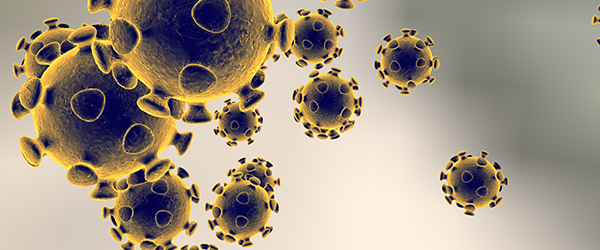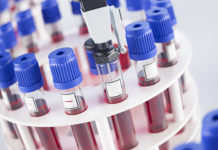 As of the day this article was written, more than 20,000 cases of the new coronavirus, named 2019-nCoV, have been confirmed in China.1 The disease, which originated in Wuhan, a city in the Hubei province of China, has taken over headlines across the world as it currently has the potential to drive a global pandemic, with the WHO declaring it a global health emergency. Though the fatality rate is currently not as high as either of its two relatives, SARS and MERS, which share the similar biology of the coronavirus, everyone is taking the threat seriously, particularly in China, where cities have become ghost towns.2
As of the day this article was written, more than 20,000 cases of the new coronavirus, named 2019-nCoV, have been confirmed in China.1 The disease, which originated in Wuhan, a city in the Hubei province of China, has taken over headlines across the world as it currently has the potential to drive a global pandemic, with the WHO declaring it a global health emergency. Though the fatality rate is currently not as high as either of its two relatives, SARS and MERS, which share the similar biology of the coronavirus, everyone is taking the threat seriously, particularly in China, where cities have become ghost towns.2
What is a coronavirus?
Coronaviruses are members of the subfamily of Coronavirinae viruses that cause respiratory and intestinal infections. There are currently 7 viruses that can infect humans, and 3 of those are known to cause serious illness, 2019-nCoV, severe acute respiratory syndrome coronavirus (SARS-CoV), and Middle Eastern respiratory syndrome coronavirus (MERS-CoV). These pathogens were thought to be relatively harmless until patients were diagnosed with SARS in 2002. Many scientists believe these viruses can be traced back to bats and other rodents, though SARS and MERS were transmitted through different animals, as masked palm civets were discovered to be secondary carriers of SARS and humans were originally infected with MERS via dromedaries.3,4
These viruses are the largest single-strand positive-sense RNA viruses known, a group that also includes the West Nile virus and less serious pathogens such as the rhinoviruses that cause the common cold. Coronaviruses have anywhere from 26 to 32 kilobase pairs of DNA per viral genome, and both SARS and MERS have 11 open reading frames (ORFs) each (sections of DNA that can be translated into proteins). These ORFS encode both non-structural proteins (nsps) and structural proteins, including ORFs that code for spike (S), membrane (M), envelope (E), and nucleocapsid (N) features of the virus. The structural proteins are essential for viral infection and propagation, performing a variety of functions such as promoting viral assembly and release, packaging the virus into virions, and shaping the virions. The S protein is especially crucial as it’s responsible for interacting with the host’s surface receptors necessary for viral attachment and entry. While SARS is known to enter cells via binding the angiotensin-converting enzyme 2 (ACE2), found on epithelial cells of the alveoli, trachea, bronchi, and bronchial glands, MERS binds dipeptidyl peptidase 4 (DPP4), expressed not just in lung epithelium but also the kidneys, small intestine, liver, and prostate.5,6
How was the new virus discovered?
An article in the New England Journal of Medicine by Zhu et al gives a great breakdown of the steps they took to discover the virus. In their article, they describe 3 patients that showed symptoms of pneumonia around December 2019. Doctors collected bronchoalveolar lavage samples, but none of them tested positive for any specific virus, so they decided to inoculate the samples on pathogen-free human airway epithelial cells taken from patients undergoing surgery for lung cancer. They expanded the cells after viral infection and determined the nature of the virus using transmission electron microscopy, which showed virions that looked like a solar corona (i.e. like a coronavirus). RNA was then extracted from the sample and the virus was amplified and sequenced via a combination of Illumina sequencing and nanopore sequencing to confirm the virus’ identity.7
Since its discovery, clinicians and other researchers have begun to characterize the virus. It appears that symptoms associated with 2019-nCoV infection are fever, dry cough, malaise, with test results that include lymphopenia (reduced lymphocyte levels), leucopenia (reduced white blood cell levels), and bilateral ground-glass opacity or consolidation (a sign of infection, chronic interstitial disease, and acute alveolar disease) in chest CT scans, among others.8 It’s also suspected that because 2019-nCoV has an 87% sequence homology to SARS-CoV, it may also use ACE2 as its entry receptor in host cells, though this remains to be proven.3,7 Some work has already been published regarding the genomic characterization of 2019-nCoV, as Chan et al have shown that the virus has 12 potential ORFs and a relatively conserved S protein sequence compared with SARS-CoV. The biggest differences between the two viruses appear to be a short putative protein found in Orf3b that has no homology to any protein found in SARS-CoV as well as a significantly different Orf8 that contains no known functional domains or motifs.9
Because of its close homology to SARS-CoV, it’s thought that the virus, like SARS-CoV, originated in bats, though an intermediate animal, likely the snake, is the carrier responsible for transmitting the disease to humans.1,10 Scientists have even hypothesized that homologous recombination within the S protein is what allowed the virus to jump from snakes to humans.10
Are there therapeutics to treat infection with the virus?
Currently, there are no approved therapeutics for any coronavirus, let alone 2019-nCoV. For SARS, a handful of medications were used off label, including interferons, convalescent plasma from patients with SARS that potentially carried anti-SARS antibodies, ribavirin (an antiviral medication), and lopinavir/ritonavir, a combination of antiviral medications typically used to treat HIV, resulting in the production of immature, non-infectious viral particles.5,11 Some of these medications have already been put to the test, as patients infected with 2019-nCoV in Thailand have been treated with a combination of lopinavir/ritonavir and oseltamivir, an anti-flu drug, which altogether improved the condition of a handful of patients.12
As for clinical trials, there are several ongoing for therapies against MERS, including a MERS vaccine and treatment with interferon beta-1b plus lopinavir/ritonavir, while a clinical trial is already underway for the treatment of 2019-nCoV with lopinavir/ritonavir (ChiCTR2000029308).8,13
Vaccines aimed at preventing infection with coronaviruses are mostly based on targeting the S protein of the virus. The S protein represents the main antigenic component of the virus, stimulating an immune response and causing the host’s immune system to attack the viral particles. Several strategies have been used, including DNA vaccines, subunit vaccines, and attenuated recombinant viruses, such as adenoviruses, Ankara (a vaccine virus), and parainfluenza, that encode the S protein. For MERS, the N protein has also been used as a target, eliciting strong immune responses and protection from the virus, though the vaccines currently in clinical trials only target the S protein of MERS, either via adenovirus or Ankara vectors.5,14,15
Protein-based therapies have also been considered for SARS and MERS, as several groups have tested peptides that block interactions within the S2 subunit, preventing the fusion between the host’s plasma membrane and the viral envelope. Monoclonal antibodies, generated from B cells of patients with SARS or specifically designed to target a variety of S protein fragments as well as cell surface receptors like DPP4, were also tested previously for their ability to prevent viral fusion, yielding positive results.5
Recently, scientists at the Peter Doherty Institute for Infection and Immunity in Melbourne, Australia, became the first to successfully grow 2019-nCoV outside of China, indicating that it would deliver samples of the virus to the World Health Organization (WHO), who will share it with labs around the world to help develop new strategies to combat the pathogen. While China is also able to grow 2019-nCoV, it has yet to send samples outside their labs for further analysis.1
Learn about COVID-19 Labels here.
LabTAG by GA International is a leading manufacturer of high-performance specialty labels and a supplier of identification solutions used in research and medical labs as well as healthcare institutions.
References:
- Akst J. Australian Lab Cultures New Coronavirus as Infections Climb. The Scientist. https://www.the-scientist.com/news-opinion/australian-lab-cultures-new-coronavirus-as-infections-climb-67031. Published 2020. Accessed January 30, 2020.
- Mahase E. China coronavirus: what do we know so far? BMJ. January 2020:1-2. https://www.bmj.com/content/368/bmj.m308. Accessed January 29, 2020.
- Paules C, Marston H, Fauci A. Coronavirus Infections-More Than Just the Common Cold. JAMA. 2020:1-2.
- Cui J, Li F, Shi ZL. Origin and evolution of pathogenic coronaviruses. Nat Rev Microbiol. 2019;17(3):181-192.
- Song Z, Xu Y, Bao L, et al. From SARS to MERS, thrusting coronaviruses into the spotlight. Viruses. 2019;11(1):1-28.
- Chen Y, Liu Q, Guo D. Emerging coronaviruses: genome structure, replication, and pathogenesis. J Med Virol. 2020:1-17.
- Zhu N, Zhang D, Wang W, Li X et al. A Novel Coronavirus from Patients with Pneumonia in China, 2019. N Engl J Med. 2020:1-7.
- Huang C, Wang Y, Li X, Ren L, Zhao J, Hu Y et al. Clinical features of patients infected with 2019 novel coronavirus in Wuhan, China. Lancet. 2020:1-10.
- Chan J, Kok K, Zhu Z, et al. Genomic characterization of the 2019 novel human-pathogenic coronavirus isolated from a patient with atypical pneumonia after visiting Wuhan. Emerg Microbes Infect. 2020;9(1):221-236.
- Ji W, Wang W, Zhao X, Zai J, Li X. Homologous recombination within the spike glycoprotein of the newly identified coronavirus may boost cross-species transmission from snake to human. J Med Virol. 2020.
- AbbVie Inc. KALETRA Prescribing Information. 2019:1-59.
- Offord C. Flu and HIV Drugs Show Efficacy Against Coronavirus. The Scientist. February 2020.
- Wang C., Horby P, Hayden F, Gao G. A novel coronavirus outbreak of global health concern. Lancet. 2020:1-4.
- Addo M. Safety, Tolerability and Immunogenicity of Vaccine Candidate MVA-MERS-S. ClinicalTrials.gov. https://clinicaltrials.gov/ct2/show/NCT03615911. Published 2019. Accessed January 30, 2020.
- King Abdullah International Medical Research Center. A Clinical Trial to Determine the Safety and Immunogenicity of Healthy Candidate MERS-CoV Vaccine (MERS002). ClinicalTrials.gov. https://clinicaltrials.gov/ct2/show/NCT04170829. Published 2019. Accessed January 30, 2020.




